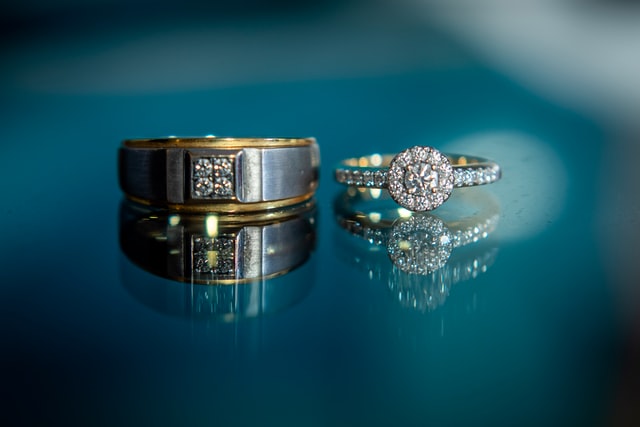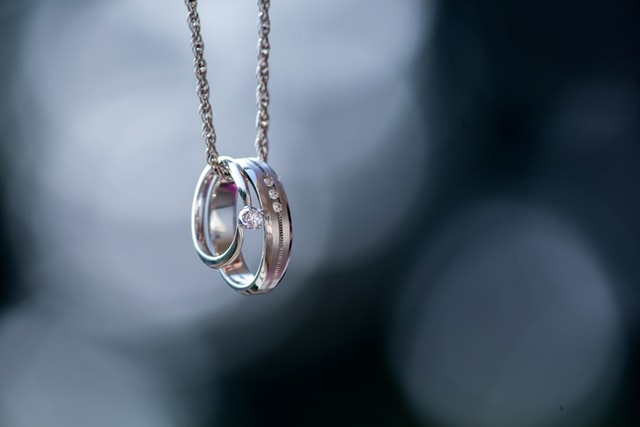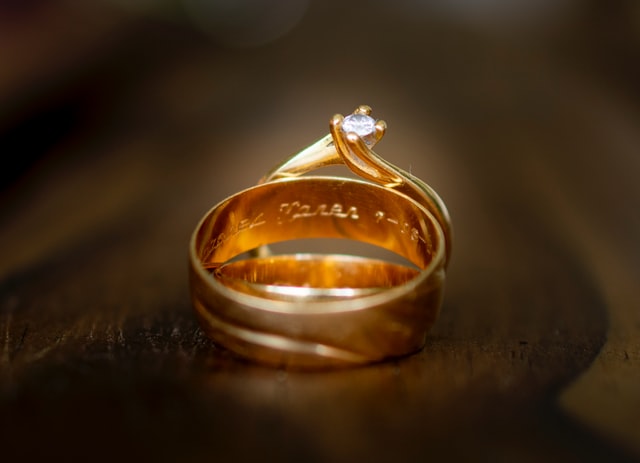In life, there will come a time when you will inherit some jewelry items from a relative that has passed on. Within this amount of jewelry, you may find some pieces that you really like, and some that obviously is not your style.
Contents
There will also be men or women who inherit a wedding ring, an engagement ring or the set from a relative and would like to give it to the one person they fell in love with and plan to spend their life with.
However, the ring or rings are too large for your betrothed’s fingers. Is it possible to resize one or both of these rings? Can it be done without damaging the ring? Let’s actually check out what most professional jewelers say about this.
When it comes to resizing a ring, it is an art. Most jewelers will outright state that their decision is to only resize a ring one time. This preserves the integrity of the ring and will risk less damage to the band or the style.
Resizing a ring could be a complex decision. The more detailed and complex that the design of the ring is, the more difficult the ring is going to be to resize.
Design: Types of Rings

There are many rings that have an intricate design to them. Some that have a continuous pattern with or without stones. These can be slightly tricky when it comes to resizing.
To make the ring a smaller size, the jeweler would have to remove an entire single piece of the pattern. This could cause some appearance issues. In other words, there will be a space that does not fit with the rest of the ring as far as the design. This can take away from the appearance and the value of the ring.
To increase the size, the jeweler will need to locate another stone if any or be able to actually design an additional portion of the band that matches the remaining portion. This may or may not be possible.
The ring may have to be sent to an actual jewelry designer who will take longer and cost more money. When it comes to love, this is probably not an issue.
Style: Resizing Wide Bands or Curved Bands

Some rings may have a wider band to them, or some could have a curved design. Both of these designs can make it extremely difficult or impossible to change the size of the ring.
The wider bands, especially if there is a gradient to the width, this is going to entail additional work for the jeweler if he agrees. By gradient, it means the ring's width starts out at the widest at the stone or setting. The width will then decrease by ⅛ to ¼ of an inch as it begins its circular shape.
For most of these, it would be okay, the jeweler would need to carefully decrease the width slightly to make up for a removed section. This is done by grinding and then sanding it. However, these types of styles may be impossible to increase in size. If there is a pattern as part of the width, the jeweler may not be able to replicate this.
For the designed ring that needs to be increased in size, this could also mean a trip to a specialized designer who is able to replicate the design.
Settings

The setting of the ring will not pose an issue for most jewelers who are making the size adjustments. A single stone or even a triple stone setting is simple enough for a trained professional.
This is done by adding a small portion of the metal to each side of the band that needs to be cut in order to add on. The new portion that is added on to increase the size of the band will be gently sanded and polished so that there is no noticeable change in the band.
To decrease the size of the band, a small portion will be removed, depending on the adjustment needed, and then the band will be soldered and sanded and then polished.
The settings that tend to cause much more work are those where the stones encircle the entire band. When a size needs to be decreased, the removal of one stone is generally quite a simple task for the jeweler.
To increase the size, a special designer and jeweler are needed. They will need to find a stone that matches the remaining stones, this will be added in as well as an increase in the band design.
The Method

When it is decided that a ring must be resized, the jeweler will cut the ring in the middle of the band in the back portion where it is least noticeable. Once this is completed, more metal will be added or removed until the desired size is reached.
The ring will then be soldered and polished to minimize any noticeable signs of work done on the ring.
When it comes to a plain band needing to be increased, the method used is to ‘stretch’ the band. With this method, the ring is placed within a compress and it is either compressed to decrease the size or stretched to increase the size.
This method is not recommended for rings that have stone settings. The stone settings could become stressed or warped. This could mean that the ring is no longer functional in the style it is.
How Many Sizes Can My Ring Change?

This is another dependent answer to give. The answer will depend on what type of ring we are talking about.
The simple plain band can be altered up to six or seven sizes, either way, increase or decrease, depending on what is needed. Being a plain band, there would be no compromise to a setting, the width or the appearance.
A ring with a single or up to triple set can be resized up to 4 sizes either way.
Rings that have an engraving on them could be almost impossible to resize and make smaller. These types of rings are generally unforgiving. Depending on the engraving, and the length of the engraving, it may be impossible to resize at all. However, some rings with a simple date or a very short inscription will take a little extra work, however, those can be resized without jeopardizing the inscription.
In the Eternity style settings, those with a stone from start to finish are decided on an individual case-by-case basis. Many times, with this style of setting, it is impossible to add or remove without jeopardizing the entirety of the ring itself.
One thing that must be restated is that the shank's condition will make or break the decision to resize a ring. If the Antique ring has been worn for so long that the shank is quite worn down itself, it would not be advised to resize the ring. The structure and integrity of the shank are no longer there. At this point, it would be advised that you put the setting on an entirely new band.
Once a ring has been resized, there is a gleam and shine to it and the ring may have the look of perfection. However, over time, the location on the shank that had been cut and then soldered will begin to show. This is nothing that can be stopped. Wear and tear on items will allow the imperfections to rear their ugly heads. Most often a jeweler will inform the client that this is likely to happen down the line in a few years. At that time, the client is advised to think of it as a life well-lived for the ring.
Most jewelers make a decision to not resize more than one or two sizes. Some will also make the decision to not resize eternity rings, pave or many vintage rings. This is not something that you should be upset with the jeweler in regards to.
The jeweler is only considering the structure, the integrity and the setting of the ring. He or she may feel that resizing the ring would only cause unnecessary damage to the ring. They may make other suggestions such as removing the setting, if possible and placing it on another band.
The Eternity Ring or the Pave ring being increased or decreased in size is also dependent on the jeweler and who they have that completes the work for them. Most of these styles of rings should not be changed or altered for fear of damaging the value of the ring.
Conclusion

The decision to resize an Antique ring is one that requires much thought. Only a jeweler who specializes in Antique jewelry should be considered for such an important and monumental feat. A jeweler with very little or no experience with Antique or Vintage rings will likely only cause irreparable damage to the ring.
Although jewelers are or can be some fantastic artists, not all jewelers, no matter how talented, can resize rings that are filled with a highly intricate design in the band. Decreasing the size may be possible, however, Antique rings with intricate bands are virtually impossible without damaging the ring. Only an honest and experienced jeweler will inform the client of all the negatives that could come with resizing an Antique or Vintage ring.

